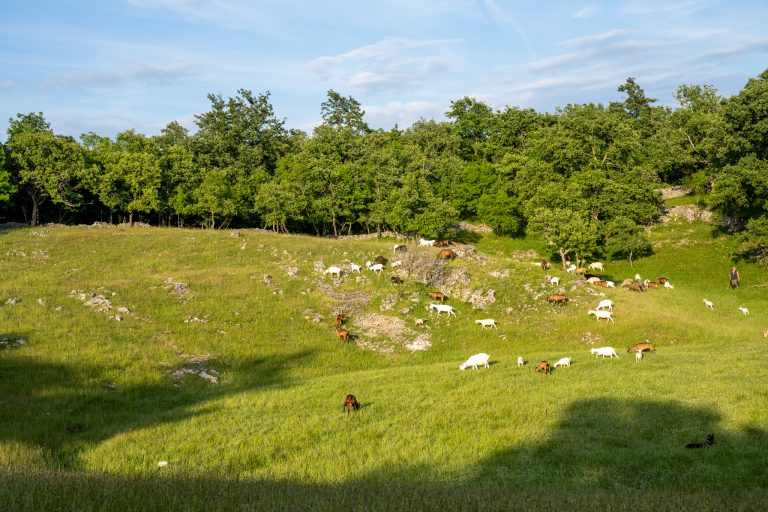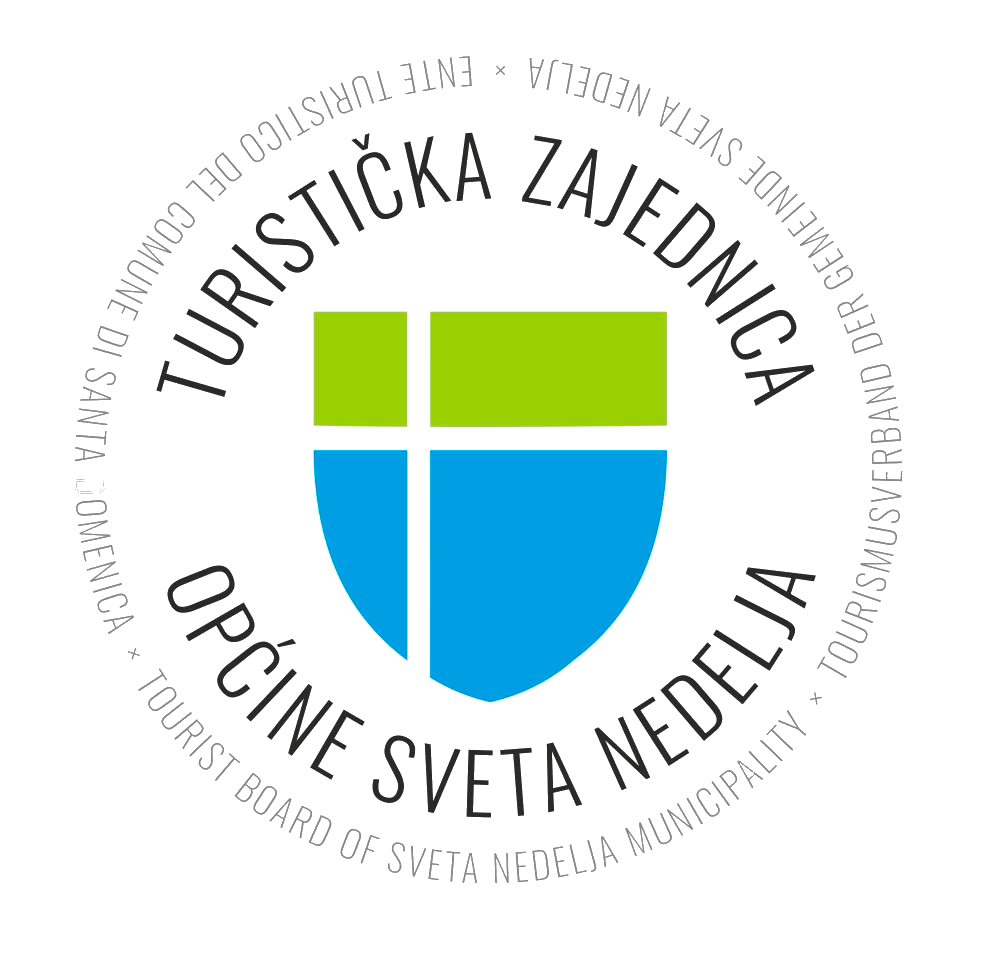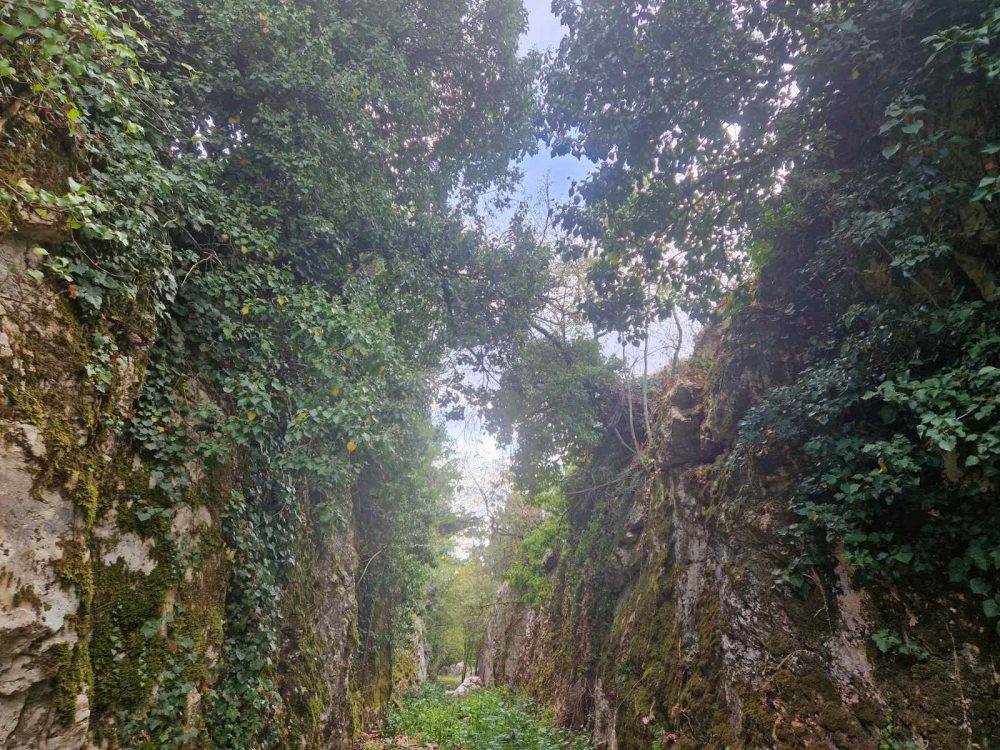Pješačka staza boksitna pruga
Datum: 14.11.2024.
Pješačka staza boksitna pruga

PJEŠAČKA STAZA BOKSITNA PRUGA
Uskotračna pruga Šumber–Plomin Porat, izgrađena 1925. godine, predstavljala je jedan od važnijih infrastrukturnih projekata na Labinštini tijekom razdoblja intenzivne eksploatacije boksita između dva svjetska rata, dok je područje bilo pod talijanskom upravom. Pruga je svečano otvorena za promet 20. srpnja 1925. godine. Ulaganje je osiguralo dioničarsko društvo za eksploataciju i obradu boksita iz Trsta, dok je radove izvodila tršćanska tvrtka Grebatz Forti. U to vrijeme, boksit na Labinštini eksploatirala je tvrtka Aluminium iz Trsta. Ovi podaci govore o važnosti boksitne industrije za gospodarski razvoj Labinštine u prvoj polovici 20. stoljeća. Izgradnja pruge, financirana od strane tršćanskih ulagača, ističe ključnu ulogu koju su strani investitori igrali u regionalnom razvoju. Također, navedeni podaci govore nam o povezanosti između industrije i infrastrukture, jer je pruga bila neophodna za transport boksita, što je bilo ključno za lokalnu ekonomiju. Sve to svjedoči o intenzivnoj industrijalizaciji regije, vođenoj interesima boksitne industrije, osobito tršćanskih tvrtki.
Glavna prednost uskotračnih pruga je njihova manja cijena izgradnje i održavanja u usporedbi sa standardnim prugama, što ih čini pogodnima za područja s teškim terenom, poput planina, uskih dolina ili rudarskih regija. Uskotračne pruge često se koriste u industriji, rudnicima i šumama, gdje su potrebe za transportom specifične, a standardne pruge ne bi bile ekonomski isplative. Tijekom 19. i 20. stoljeća uskotračne pruge bile su ključne u povezivanju udaljenih i nepristupačnih područja te su često služile za transport robe, poput ruda i drva, kao i za lokalni putnički promet.
Ova boksitna pruga, dužine približno 15 kilometara, bila je od velike važnosti za prijevoz boksita iz bogatih nalazišta smještenih u okolici Vetve, Svetog Martina i Šumbera prema obali, gdje se ruda ukrcavala za daljnji transport morskim putem.
Polazna točka pruge nalazila se u dijelu Šumbera poznatom kao Martinačić, odakle je pruga prolazila kroz Stepčići i završavala u Plominskom zaljevu, točnije u Plomin Poratu. Ovdje se boksit ukrcavao na brodove i transportirao do talijanskih rafinerija, gdje se dalje obrađivao. Ova pruga je predstavljala vitalnu vezu između rudarskih krajeva i morskih ruta, omogućujući efikasan transport teške rude kroz brdoviti teren Istre.
Pruga je bila uskotračna, što znači da je širina kolosijeka bila manja od standardne širine (koja je obično 1435 mm). Uskotračne pruge u to vrijeme često su imale širinu između 600 mm i 1000 mm. Takva konfiguracija omogućavala je lakše savladavanje uskih i zavojitih staza kroz brdovit teren, kao što je slučaj s ovim dijelom Istre.
Uskotračne pruge, poput ove, bile su uobičajene u prvoj polovici 20. stoljeća jer su omogućavale izgradnju željezničkih linija u zahtjevnim geografskim uvjetima, uz relativno niske troškove. Širina kolosijeka ove pruge bila je manja od standardne, što je omogućavalo lakše prilagođavanje vijugavim i strmim terenima Labinštine.
Nakon Drugog svjetskog rata, promjene državnih granica i ekonomskih prioriteta dovele su do pada važnosti eksploatacije boksita na ovom području. Posljedično, uskotračna pruga Šumber-Plomin Porat izgubila je svoj strateški značaj. Demontaža pruge i popratne infrastrukture započela je ubrzo nakon Drugog svjetskog rata, a s vremenom su i posljednji tragovi ove pruge nestali iz krajolika.
Iako danas fizičkih ostataka pruge gotovo i nema, ona ostaje važan dio lokalne povijesti i sjećanja stanovnika. Pristan u Plominskom zaljevu još uvijek podsjeća na to doba, dok je sama pruga postala dijelom bogate industrijske baštine Labinštine, svjedočanstvo vremena kada je ovaj kraj bio jedno od najvažnijih rudarskih područja u regiji.
Potez pruge jako je atraktivan krajobrazno. Na području gdje je kretala pruga danas se smjestila Farma Drijade koja posebno pazi na očuvanje krškog terena koji je okružuje. Stazom se mogu vidjeti usjeci u stijenama kuda je pruga prolazila, nasipani dijelovi gdje su kamenja gotovo besprijekorno naslagana te velik broj prirodnih skulptura od stijena koje ovo područje čine posebnim.
BAUXITE RAILWAY TRAIL
The narrow-gauge railway line Šumber–Plomin Porat, built in 1925, was one of the most important infrastructure projects on the Labin area during the period of intensive bauxite exploitation between the two World Wars, while the region was under Italian administration. The railway was officially opened for traffic on July 20, 1925. The investment was secured by a joint-stock company for the exploitation and processing of bauxite from Trieste, while the construction works were carried out by the Trieste-based company Grebatz Forti. At that time, bauxite in the Labin area was mined by the company Aluminium from Trieste. These details highlight the significance of the bauxite industry for the economic development of the Labin area in the first half of the 20th century. The construction of the railway, financed by Trieste investors, underscores the key role that foreign investors played in regional development. Additionally, these details speak to the connection between industry and infrastructure, as the railway was essential for the transportation of bauxite, which was crucial for the local economy. All of this attests to the intense industrialization of the region, driven by the interests of the bauxite industry, particularly the Trieste companies.
The main advantage of narrow-gauge railways is their lower construction and maintenance costs compared to standard railways, making them suitable for areas with difficult terrain, such as mountains, narrow valleys, or mining regions. Narrow-gauge railways were often used in industry, mines, and forests, where transportation needs were specific, and standard railways would not have been economically viable. During the 19th and 20th centuries, narrow-gauge railways were key in connecting remote and inaccessible areas and were often used for transporting goods such as ores and timber, as well as for local passenger traffic.
This bauxite railway, approximately 15 kilometers long, was of great importance for transporting bauxite from rich deposits located around Vetva, Sv. Martin, and Šumber towards the coast, where the ore was loaded onto ships for further transport by sea.
The starting point of the railway was located in the part of Šumber known as Martinačić, from where the railway passed through Stepčići and ended in the Plomin Bay, specifically in Plomin Porat. Here, the bauxite was loaded onto ships and transported to Italian refineries for further processing. This railway represented a vital link between the mining areas and sea routes, enabling efficient transport of heavy ore through the hilly terrain of Istria.
The railway was narrow-gauge, meaning that the track width was smaller than the standard width (which is usually 1435 mm). Narrow-gauge railways at that time often had a track width between 600 mm and 1000 mm. Such a configuration allowed easier navigation through narrow and winding paths across hilly terrain, as was the case in this part of Istria.
Narrow-gauge railways, like this one, were common in the first half of the 20th century because they enabled the construction of railway lines in demanding geographical conditions, with relatively low costs. The track width of this railway was smaller than standard, allowing easier adaptation to the winding and steep terrain of the Labin area.
After World War II, changes in national borders and economic priorities led to a decline in the importance of bauxite exploitation in the area. Consequently, the narrow-gauge railway Šumber-Plomin Porat lost its strategic importance. The dismantling of the railway and its associated infrastructure began shortly after World War II, and over time, the last traces of this railway disappeared from the landscape.
Although there are almost no physical remnants of the railway today, it remains an important part of local history and the memory of the residents. The dock in Plomin Bay still serves as a reminder of that era, while the railway itself has become part of the rich industrial heritage of Labin, a testament to the time when this area was one of the most important mining regions in the region.
The route of the railway is very attractive from a landscape perspective. The area where the railway once ran is now home to the Drijade Farm, which places special emphasis on preserving the karst terrain that surrounds it. Along the trail, one can observe cuts in the rocks where the railway once passed, embankments where stones are almost perfectly stacked, and a large number of natural rock sculptures that make this area special.
SENTIERO DELLA FERROVIA DI BAUSSITE
La ferrovia a scartamento ridotto Šumber–Plomin Porat, costruita nel 1925, è stata uno dei progetti infrastrutturali più importanti nell’area di Labin durante il periodo di intensa estrazione di bauxite tra le due guerre mondiali, quando la regione era sotto amministrazione italiana. La ferrovia è stata ufficialmente aperta al traffico il 20 luglio 1925. L’investimento è stato garantito dalla società per azioni per lo sfruttamento e la lavorazione della bauxite di Trieste, mentre i lavori di costruzione sono stati eseguiti dalla compagnia triestina Grebatz Forti. In quel periodo, la bauxite nell’area di Labin veniva estratta dalla compagnia Aluminium di Trieste. Questi dettagli evidenziano l’importanza dell’industria della bauxite per lo sviluppo economico dell’area di Labin nella prima metà del XX secolo. La costruzione della ferrovia, finanziata da investitori triestini, sottolinea il ruolo cruciale che gli investitori stranieri hanno avuto nello sviluppo regionale. Inoltre, questi dati parlano del legame tra industria e infrastrutture, poiché la ferrovia era fondamentale per il trasporto della bauxite, elemento essenziale per l’economia locale. Tutto ciò testimonia l’intensa industrializzazione della regione, guidata dagli interessi dell’industria della bauxite, in particolare delle compagnie triestine.
Il principale vantaggio delle ferrovie a scartamento ridotto è il loro costo inferiore di costruzione e manutenzione rispetto alle ferrovie standard, il che le rende adatte a terreni difficili, come montagne, valli strette o zone minerarie. Le ferrovie a scartamento ridotto venivano spesso utilizzate nell’industria, nelle miniere e nelle foreste, dove le esigenze di trasporto erano specifiche e le ferrovie standard non sarebbero state economicamente convenienti. Durante il XIX e il XX secolo, le ferrovie a scartamento ridotto sono state fondamentali per connettere aree remote e inaccessibili, spesso utilizzate per il trasporto di merci come minerali e legname, nonché per il traffico passeggeri locale.
Questa ferrovia per la bauxite, lunga circa 15 chilometri, era di grande importanza per il trasporto della bauxite dai ricchi giacimenti situati intorno a Vetva, Sv. Martin e Šumber verso la costa, dove il minerale veniva caricato sulle navi per il trasporto marittimo.
Il punto di partenza della ferrovia si trovava nella zona di Šumber conosciuta come Martinačić, da cui la ferrovia passava per Stepčići e terminava nella baia di Plomin, precisamente a Plomin Porat. Qui, la bauxite veniva caricata sulle navi e trasportata verso le raffinerie italiane per ulteriori lavorazioni. Questa ferrovia rappresentava un collegamento vitale tra le zone minerarie e le rotte marittime, consentendo un trasporto efficiente del minerale attraverso il terreno collinoso dell’Istria.
La ferrovia era a scartamento ridotto, il che significa che la larghezza dei binari era inferiore a quella standard (che di solito è di 1435 mm). Le ferrovie a scartamento ridotto di quel periodo avevano spesso una larghezza tra i 600 mm e i 1000 mm. Tale configurazione consentiva una maggiore facilità di adattamento ai sentieri stretti e tortuosi attraverso terreni collinari, come nel caso di questa parte dell’Istria.
Le ferrovie a scartamento ridotto, come questa, erano comuni nella prima metà del XX secolo perché permettevano la costruzione di linee ferroviarie in condizioni geografiche difficili, con costi relativamente bassi. La larghezza dei binari di questa ferrovia era inferiore a quella standard, permettendo un adattamento più facile ai terreni tortuosi e ripidi dell’area di Labin.
Dopo la Seconda Guerra Mondiale, i cambiamenti nelle frontiere nazionali e le priorità economiche hanno portato al declino dell’importanza dello sfruttamento della bauxite in quest’area. Di conseguenza, la ferrovia a scartamento ridotto Šumber-Plomin Porat ha perso la sua importanza strategica. La demolizione della ferrovia e delle sue infrastrutture associate è iniziata subito dopo la Seconda Guerra Mondiale, e nel tempo gli ultimi segni di questa ferrovia sono scomparsi dal paesaggio.
Sebbene oggi non esistano quasi più tracce fisiche della ferrovia, essa rimane una parte importante della storia locale e della memoria dei residenti. Il molo nella baia di Plomin è ancora un ricordo di quell’epoca, mentre la ferrovia stessa è diventata parte del ricco patrimonio industriale di Labin, testimoniando un periodo in cui questa zona era una delle aree minerarie più importanti della regione.
Il tracciato della ferrovia è molto suggestivo dal punto di vista paesaggistico. Nell’area dove un tempo passava la ferrovia oggi si trova la Farma Drijade, che presta particolare attenzione alla conservazione del terreno carsico che la circonda. Lungo il percorso si possono osservare tagli nelle rocce dove la ferrovia passava, rilevati dove le pietre sono quasi perfettamente sovrapposte e un gran numero di sculture naturali di roccia che rendono quest’area speciale.
WANDERWEG BAUXITBAHN
Die Schmalspurbahn Šumber–Plomin Porat, die 1925 erbaut wurde, war eines der wichtigsten Infrastrukturprojekte in der Region Labin während der Zeit intensiver Bauxitförderung zwischen den beiden Weltkriegen, als die Region unter italienischer Verwaltung stand. Die Bahn wurde offiziell am 20. Juli 1925 für den Verkehr eröffnet. Die Investition wurde von einer Aktiengesellschaft zur Ausbeutung und Verarbeitung von Bauxit aus Triest gesichert, während die Bauarbeiten von der Triester Firma Grebatz Forti ausgeführt wurden. In dieser Zeit wurde das Bauxit in der Region Labin von der Firma Aluminium aus Triest abgebaut. Diese Informationen verdeutlichen die Bedeutung der Bauxitindustrie für die wirtschaftliche Entwicklung der Region Labin in der ersten Hälfte des 20. Jahrhunderts. Der Bau der Bahn, der von Triester Investoren finanziert wurde, hebt die Schlüsselrolle hervor, die ausländische Investoren in der regionalen Entwicklung spielten. Darüber hinaus zeigen diese Daten die Verbindung zwischen Industrie und Infrastruktur, da die Bahn für den Transport von Bauxit unerlässlich war, was entscheidend für die lokale Wirtschaft war. All dies zeugt von der intensiven Industrialisierung der Region, die von den Interessen der Bauxitindustrie, insbesondere der Triester Unternehmen, vorangetrieben wurde.
Der Hauptvorteil von Schmalspurbahnen ist die geringeren Bau- und Instandhaltungskosten im Vergleich zu Standardbahnen, was sie für Gebirgsterrain, enge Täler oder Bergbaugebiete geeignet macht. Schmalspurbahnen wurden häufig in der Industrie, im Bergbau und in Wäldern eingesetzt, wo die Transportbedürfnisse spezifisch waren und Standardbahnen nicht wirtschaftlich tragfähig gewesen wären. Im 19. und 20. Jahrhundert waren Schmalspurbahnen von entscheidender Bedeutung, um abgelegene und schwer zugängliche Gebiete zu verbinden und wurden oft für den Transport von Gütern wie Erz und Holz sowie für den lokalen Personenverkehr genutzt.
Diese Bauxitbahn, die etwa 15 Kilometer lang war, war von großer Bedeutung für den Transport von Bauxit aus den reichen Lagerstätten in der Umgebung von Vetva, Sv. Martin und Šumber zur Küste, wo das Erz auf Schiffe verladen und für den weiteren Transport über den Seeweg verschifft wurde.
Der Ausgangspunkt der Bahn befand sich im Teil von Šumber, der als Martinačić bekannt ist, von wo aus die Bahn durch Stepčići führte und an der Plomin-Bucht, genauer gesagt in Plomin Porat, endete. Hier wurde das Bauxit auf Schiffe verladen und zu den italienischen Raffinerien transportiert, wo es weiterverarbeitet wurde. Diese Bahn stellte eine wichtige Verbindung zwischen den Bergbaugebieten und den Seewegen dar und ermöglichte einen effizienten Transport des schweren Erzes durch das hügelige Gelände Istriens.
Die Bahn war eine Schmalspurbahn, was bedeutet, dass der Abstand zwischen den Gleisen kleiner war als bei Standardbahnen (die normalerweise eine Breite von 1435 mm haben). Schmalspurbahnen dieser Zeit hatten in der Regel eine Breite zwischen 600 mm und 1000 mm. Diese Konfiguration ermöglichte es, enge und kurvenreiche Strecken durch hügeliges Gelände wie das in diesem Teil Istriens leichter zu bewältigen.
Schmalspurbahnen wie diese waren in der ersten Hälfte des 20. Jahrhunderts weit verbreitet, da sie den Bau von Bahnlinien in schwierigen geographischen Bedingungen zu relativ niedrigen Kosten ermöglichten. Der Gleisabstand dieser Bahn war kleiner als der Standard, was eine leichtere Anpassung an die kurvigen und steilen Geländebedingungen in der Region Labin ermöglichte.
Nach dem Zweiten Weltkrieg führten Änderungen der Staatsgrenzen und wirtschaftliche Prioritäten zum Rückgang der Bedeutung der Bauxitförderung in dieser Region. Infolgedessen verlor die Schmalspurbahn Šumber-Plomin Porat ihre strategische Bedeutung. Der Abbau der Bahn und ihrer zugehörigen Infrastruktur begann bald nach dem Zweiten Weltkrieg, und im Laufe der Zeit verschwanden die letzten Spuren dieser Bahn aus der Landschaft.
Obwohl heute fast keine physischen Überreste der Bahn mehr existieren, bleibt sie ein wichtiger Teil der lokalen Geschichte und der Erinnerung der Einwohner. Der Hafen in der Plomin-Bucht erinnert noch immer an diese Ära, während die Bahn selbst ein Teil des reichen industriellen Erbes von Labin ist, ein Zeugnis für die Zeit, als diese Region eines der wichtigsten Bergbaugebiete der Region war.
Die Trasse der Bahn ist landschaftlich sehr attraktiv. In dem Bereich, in dem die Bahn einst verlief, befindet sich heute der Bauernhof Drijade, der besonderen Wert auf die Erhaltung des umliegenden Karstgeländes legt. Auf dem Weg kann man Einschnitte in den Felsen sehen, durch die die Bahn einst verlief, Dämme, in denen Steine nahezu perfekt übereinandergeschichtet sind, sowie zahlreiche natürliche Felsenskulpturen, die dieses Gebiet besonders machen.






